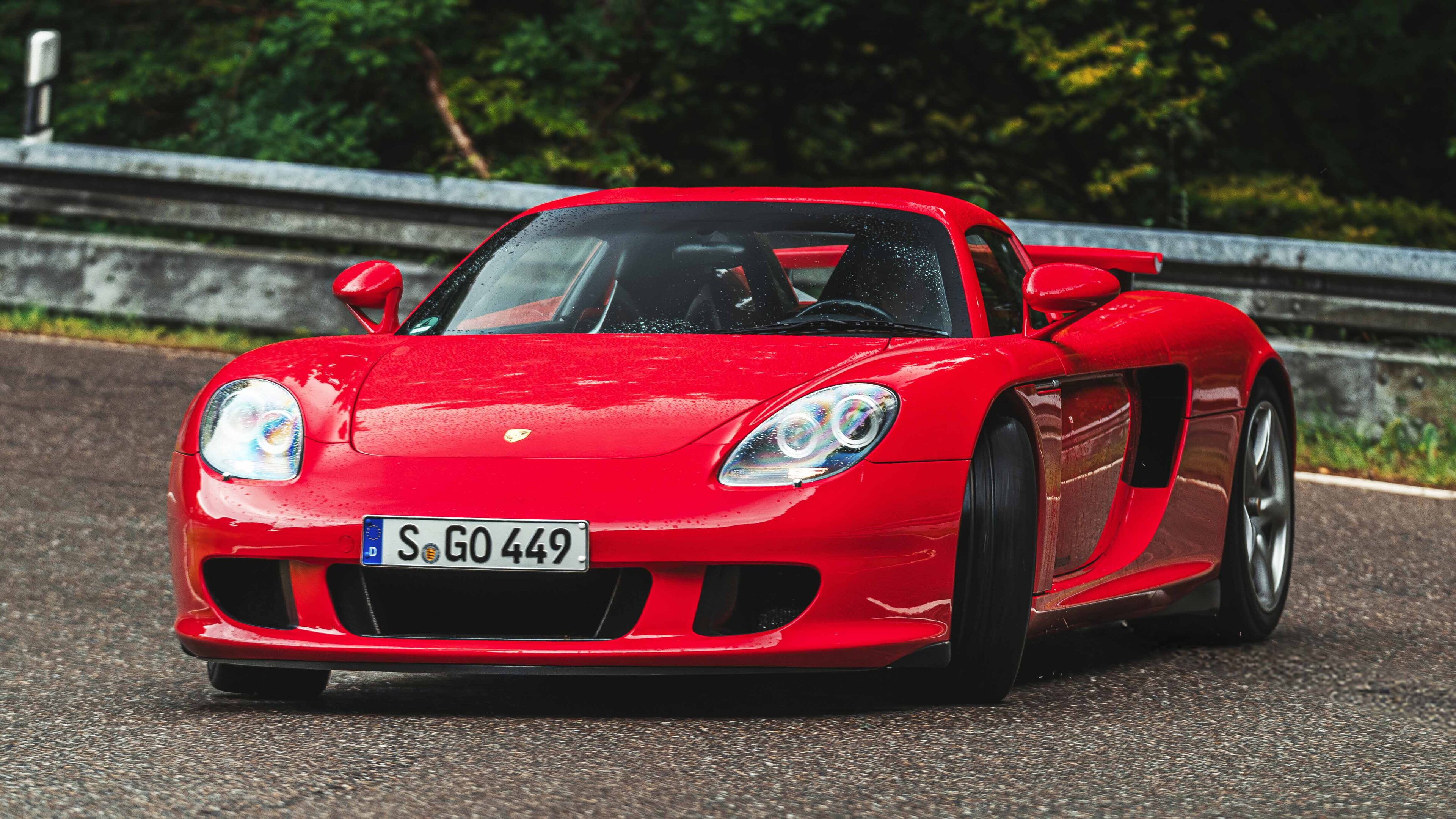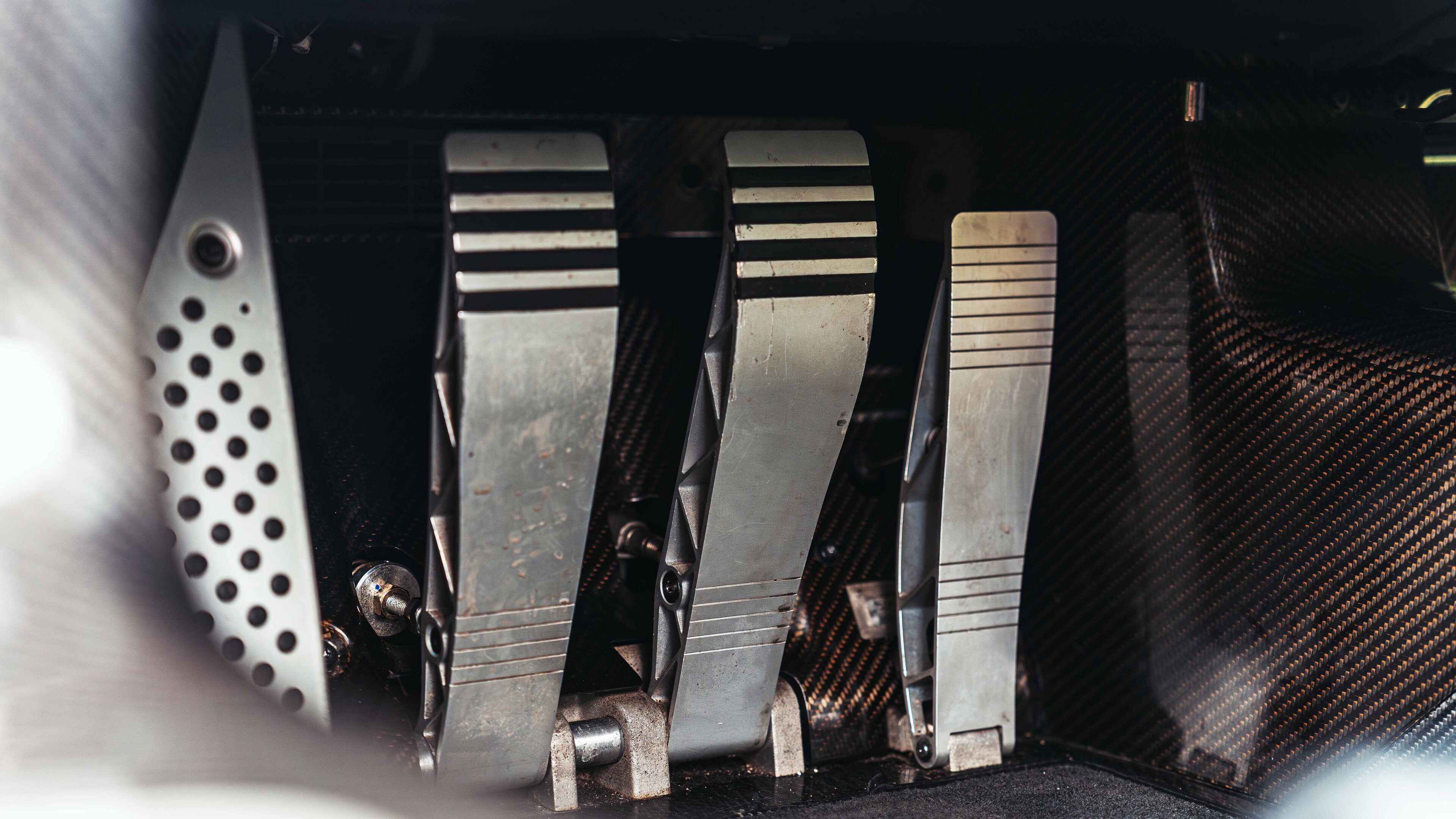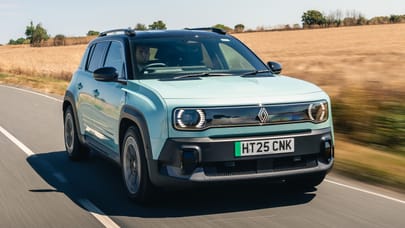
Flat out in the best ever V10s: Porsche Carrera GT and Lexus LFA
These two cars aren’t dominated by their V10 engines, but they are defined by them. Prepare for the ultimate showdown...
Ahead the Lexus LFA accelerates. Hard. Full beans in second gear. The V10 rips through the rev range, god know what Lexus did to the exhaust to ensure it made a noise like this, but it shrieks. It’s so piercing, so pure and clean that it barely seems mechanical. It’s as if a banshee has been harnessed inside each of those tailpipes. Apt, seeing as together they make a ghoulish face.
It’s a force of nature, and that’s what separates it from the Porsche Carrera GT. That’s a force of mechanics. I open the throttle to give chase and behind me a fabulously complex series of events take place. I hear the suck of air as the throttle bodies open, the fast chain rattle from the valvetrain, the piston thrash and overlaying all that, an implacably hard, raw exhaust note. Everything that moves back there creates an individual signature and in the cabin I feel connected to everything.
These two cars aren’t dominated by their engines. But they are defined by them. A V10 is a weird engine for a road car. Surely you’d have a V12 for its majesty or the more obvious charms of a V8? The V10 is a more singular choice because you arrive at it out of logic and reasoning, rather than passion. You arrive at it from motorsport.
Photography: Mark Riccioni
What was Lexus thinking? The LFA was directly influenced by Toyota’s F1 project, perhaps the most expensive, least successful foray into F1 there’s ever been. The LFA’s V10 was a joint project between Lexus and Yamaha, borne out of the top brass attending an F1 race in 2001 and being entranced by the wailing engines. Besides, they couldn’t get the peak revs they wanted out of a V8, nor the fast response from a V12. So a V10 it had to be. They created something deeply special, a 4.8-litre narrow angle V10 the size of a V8 and the weight of a V6, and only ever put it in this car. That’s right, its forged titanium conrods, solid titanium valves and ability to rev from idle to the red line in 0.6secs were never seen anywhere else. It might be one of the most romantic engineering decisions ever made.
Porsche’s V10 reasoning was more pragmatic. Back in the early 1990s Hans Mezger had developed a 3.5-litre V10 for the Footwork F1 team. However, too large and heavy, it wasn’t very good and midway through the 1991 season, the team stopped using it. But the thinking behind it re-emerged a few years later when Porsche needed an engine for its 1998 LMP2000 project. Redesigned as a 5.5 litre without pneumatic valve springs, it showed enormous promise. But never raced. Rumour suggests VW Group chairman Ferdinand Piëch pulled it to avoid competition with Audi’s Le Mans effort, others say the budget was funnelled to the crucial Porsche Cayenne SUV.
And so, after a considerable amount of reworking which saw the capacity climb to 5.7 litres, it found its way into a road car. Where it was connected to a manual box. And the rest is history. And on some very special days, if you’re very lucky and the stars align, history comes to life. LFA and Carrera GT together. They’re not rivals, weren’t even contemporaries, seeing as the Porsche arrived in 2003, the Lexus six years later. But as well as engines, they have the same mentality. Let’s call it obsession with perfection.
Parked up in a layby next to the River Danube in southern Germany, the Lexus could have been launched today, so modern does it look. A casual onlooker might assume it’s a grand tourer, but you and I know better. We see the air intakes aft of the cabin, know that’s because Lexus relocated the radiators to the back, along with the gearbox, to create a 48:52 weight distribution. The more you look at it, the more exotic it becomes.
So too the Carrera GT, although you have to open the engine bay to really get a sense of it. The V10 sits within a mighty carbon fibre subframe, with inboard pushrod suspension mounted on the outer flanks. Ahead, the cockpit is simple, unadorned, dominated by the stratified ash and birch gearknob – a nod to the balsa lever in the Porsche 917. It’s a stripped road racer with fixed back seats, rev counter front and centre, borrowed parts and little concession to luxury. Bandwidth? Not in its vocabulary. Alongside perhaps the Ferrari F50, one of the most single minded road cars there’s been.
Top Gear
Newsletter
Thank you for subscribing to our newsletter. Look out for your regular round-up of news, reviews and offers in your inbox.
Get all the latest news, reviews and exclusives, direct to your inbox.
Open the LFA’s door and you’re greeted by sumptuous cream leather. The LFA is from the era when everything had a button or a switch. Or a mouse. These were a hateful means of navigating a screen back in the day, but seem charmingly retro nowadays. Again you look closer and pick up the bespokery in here – the super slender column stalks, the beautifully positioned dial adjusters for the modes and gearchange speeds, the compact hollow carbon steering wheel and those seats... they may look more like dental chairs, but with their plinth controls and cosseting support why did Lexus not use them elsewhere?
I bet a pile of money was lost on every single one of the 500 built. They were £345,000 each when they went on sale after a 10 year development cycle. Yes, really. Part of what makes the LFA so special is that it was forced through by the will of one man against his board of directors. Akio Toyoda wasn’t the boss back in 2000, he just knew a cool project when he saw it. The lengths and learnings the LFA team had to go through to create the car under his guidance were incredible – Toyota didn’t like the carbon work from suppliers so, having never done it before, set up a department to do all the carbon work, including the tub. That’s unheard of in a huge corporation.
The first prototype was built in 2003. In 2007 Lexus took it to the Nürburgring 24 Hours as part of its development process. Toyoda himself was one of the drivers, but racing under a pseudonym so the board of directors wouldn’t know. It’s the ultimate ‘it’ll be ready when it’s ready’ car, the team given all the time, money and resources necessary to create something unique.
There is, appropriately, nothing else like it. In a way I’m amazed, because it’s an idea worth copying. Lavish a car with so much finesse and care you create a masterpiece. The Carrera GT is single minded, the LFA has almost complete duality. It is viceless, good natured, light, calm and accurate. The only allowance you have to make is the six speed single clutch transmission – despite 0.2secs shift times, it’s a head nodder. Otherwise, you can slip silkenly about, the ultimate daily if you were so inclined.
And then, in a blink, it flips. The V10 is responsible for that – just let the revs climb beyond 3,000-odd. There’s not that much torque, so the noise gets going before the car itself, but everything knits together by 4,500rpm, with half the rev range still to indulge. It’s the responses that dazzle – not just to the throttle, but the steering, brakes, suspension. There’s no slack in anything, just this wonderful clarity of matched responses across every component. Steering feel is the weak point (it’s electrically assisted, not hydraulic), but because you get feedback from everywhere else, confidence arrives pretty much immediately.
The roads round here twist tightly through gorges and up hillsides and the LFA gets busy dismantling them. It does so with astonishing precision. It’s not a car that attacks the road, grabs hold of it and tears at it. It’s all about flow and balance. Even powering out of hairpins it would rather drive cleanly out than indulge in lurid skids. I adore it because you can feel every bit of effort and energy that was poured into its creation. You look around the cabin and you can sense the decisions made, you drive it and silently thank the engineers for persevering with it, because they have created a marvel.
But if you want to feel wrapped up in a driving experience, belittled and intimidated by it at times, enraptured and taken to new heights at others, you need a Carrera GT. It’s a challenge this car. It has a savage reputation, but the new tyres have helped tame it (Porsche redeveloped modern Michelin Cup2s for the GT last year) and the most awkward thing about it is getting it moving. Don’t touch the throttle. Just come up slowly, gingerly on the clutch and let the anti stall get it rolling. It’s not infallible, but it’s better than a bootful of revs and trying to slip a clutch that has the operating range of a light switch.
Once moving it’s sublime. Just don’t try to boss it around. That’s when it’ll bite. Just drive it in the knowledge that you’re simply not a good enough driver to extract the max from it. And even if you were, it’s a learning process. Particularly the gearshift.
I haven’t driven anything as absorbing since the GMA T.50. The Porsche is stripped of the Lexus’ protective layer of civility. No sensation is denied you. The platform is super stiff, feedback is constant, you feel the rose jointed suspension working at each separate corner. At low speed it hobbles and bobbles, but soon harmonises with the surface and starts delivering thrills in a way almost nothing else matches. Yeah, T.50 and F50, those are the only things I can think of that match or better it.
The Lexus is the greater achievement, the Porsche is the more exotic driving experience, but no V10 has bettered these two
Like the Lexus, the V10 has almost zero flywheel effect – great for response, tricky when it comes to blipping downshifts. The V10 is wild, constantly busy, packs an enormous punch, torquier than the Lexus in a body 100kg lighter, even tiring to be around. You automatically treat it with trepidation and respect because it makes you want to be better at driving, at changing gear, at living up to its exacting standards.
Challenge it and it will bite – 2003-vintage traction control wasn’t fast to react, and didn’t do much even then. Better live to fight another day than go for a slightly higher corner entry speed or another inch of throttle on the way out. But as with all the greats there’s so much to discover besides speed. This is what so many modern supercars miss. They provide power and the electronics to tame it. Extremely clever, but often unsatisfying because it removes responsibility from the driver. The Carrera GT is fascinating at all speeds, in any gear, at all times, on any road, in all conditions. Driving it made me tingle. I think about it now and the hairs on my neck rise, a shiver runs down my spine.
If I had to pick one, I’d take the Carrera GT – the Lexus is the greater achievement, the Porsche is the more exotic driving experience, but no V10 has bettered these two. We doubt one ever will. But equally no V10 has ever had a better home than in the frame of an LFA or Carrera GT. They are cars informed by motorsport, and sent down their chosen road car paths with clarity of mind and purpose. What transcendental cars they are. I doubt we’ll ever see their like again.
Lexus LFA
Price new (2009): £345,000
Price now: £780,000
Engine: 4,805cc V10, 552bhp @ 8,700rpm, 354Ib ft @ 6,800rpm
Transmission: 6spd automated manual, RWD
Performance: 0-62mph in 3.7secs, 202mph
Weight: 1,480kg
Porsche Carrera GT
Price new (2005): £321,093
Price now: £1.5m
Engine: 5,733cc V10, 604bhp @ 8,000rpm, 435Ib ft @ 5,700rpm
Transmission: 6spd manual, AWD
Performance: 0-62mph in 3.7secs, 206mph
Weight: 1,380kg
Trending this week
- Car Review
BMW iX3











